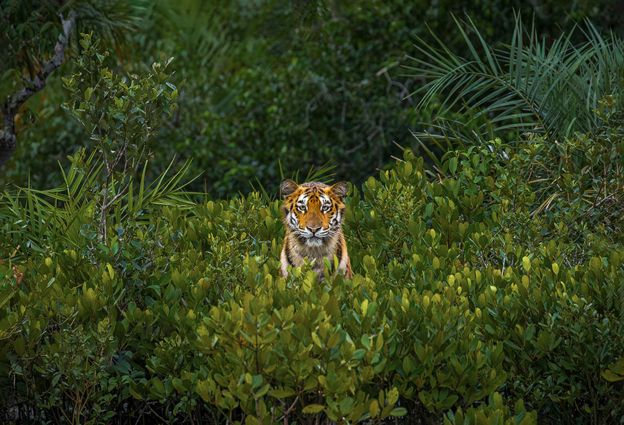Soham Bhattacharyya has been named overall winner of this year’s Mangrove Photography Awards, for his image of an endangered tigress in the Sundarbans Biosphere Reserve, India.
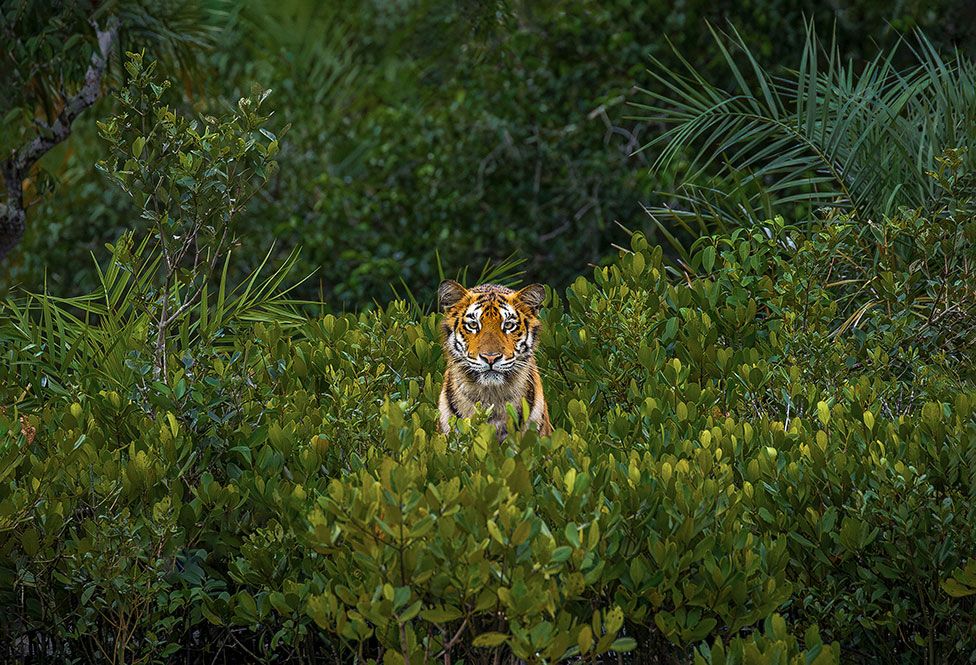
Run by the Mangrove Action Project, the competition – now in its ninth year – aims to show the relationships between wildlife, coastal communities and mangrove forests, as well as the fragility of these unique ecosystems, both above and below the waterline.
Mr Bhattacharyya’s winning image, called The Finest Flower of the Mangroves, shows a young Royal Bengal tigress in its natural mangrove habitat, peering at the photographer.
“The solitary figure of the tiger, standing amidst the lush green mangrove forest vegetation, poignantly underscores the isolation it must endure in an ever-shrinking habitat,” said competition judge Daisy Gilardini.
In 2021, West Bengal Forest Department estimated there were only 96 Royal Bengal tigers in the region.
Mangroves are an important protection against climate change, with one acre (4,000sq m) of mangrove forest absorbing nearly the same amount of carbon dioxide as an acre of Amazon rainforest.
The forests also protect coastlines from eroding, as intense storms grow more frequent.
“Photographs of mangroves play a multifaceted role in advocating for the conservation and protection of these critical coastal forests,” said another of the judges, Fulvio Eccardi.
Fellow judge Octavio Aburto added: “The images from this year captivated our imagination… giving us hope and illuminating a positive future for mangrove ecosystems.”
Here are a selection of winning images from seven competition categories, with descriptions by the photographers.

Mangroves & Landscape winner: Emerging Roots, by Cristiano Martins Xavier, Brazil
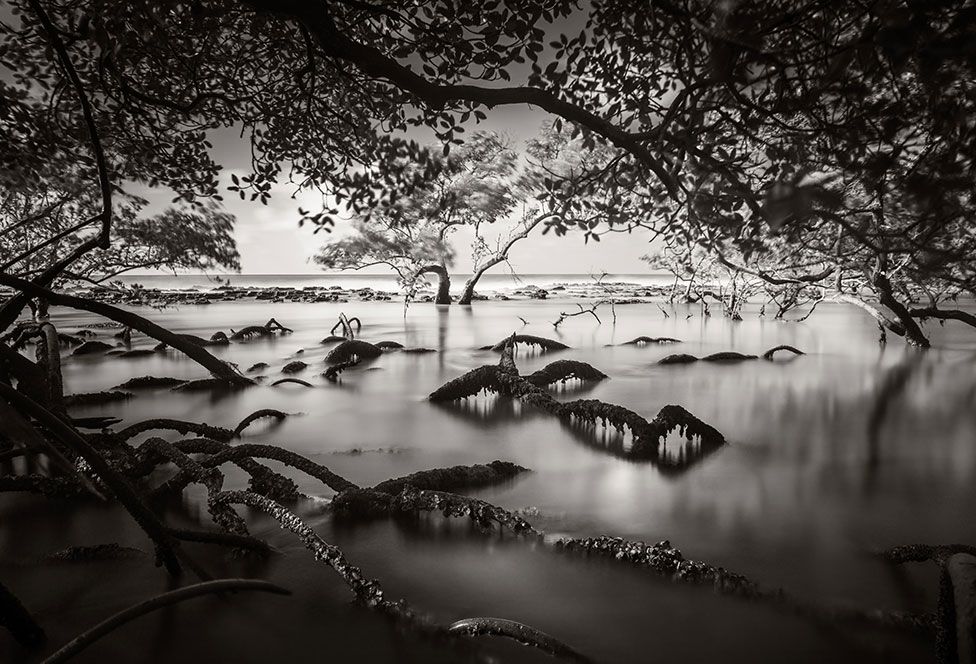
As the low tide allowed me to walk through the trees, I saw this scene where the mangrove roots were partially submerged.
I decided to use a long-exposure technique to soften the surface of the water, and transform the photo into black and white to give the scene a sinister look.
Brazil is home to extensive mangrove ecosystems along its coastline, totalling approximately 7% of the world’s mangrove area.

Mangroves & Landscape highly commended: Between Ancient and Modern Lights, by Aaron Ruy G Musa, Philippines
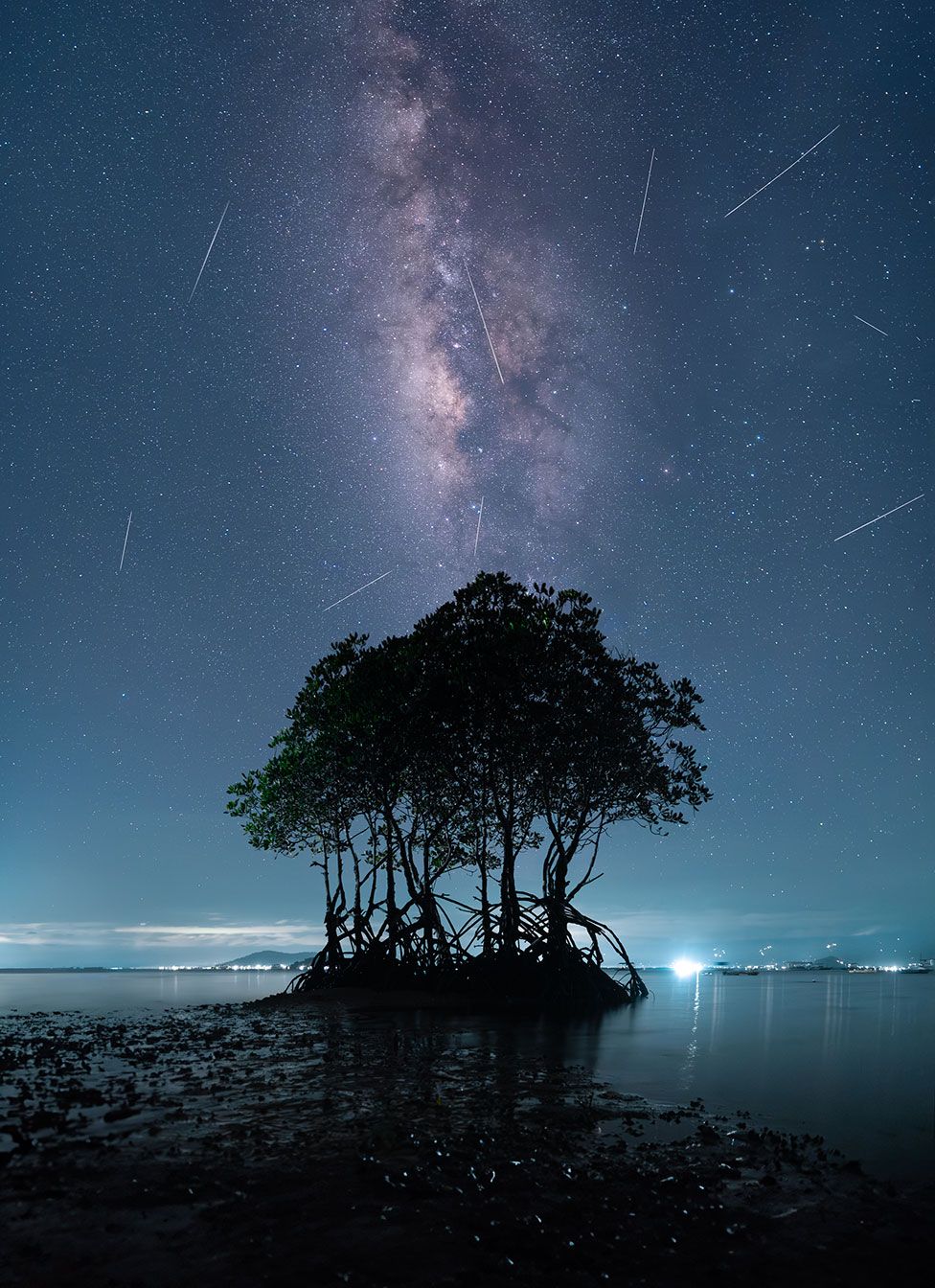
Lights from Bais City, the Milky Way and the Lyrid meteor shower [are seen alongside] the mangrove’s trees during darkness and low tide.

Mangroves & Wildlife winner: Hiding in Plain Sight, by Chien Lee, Colombia
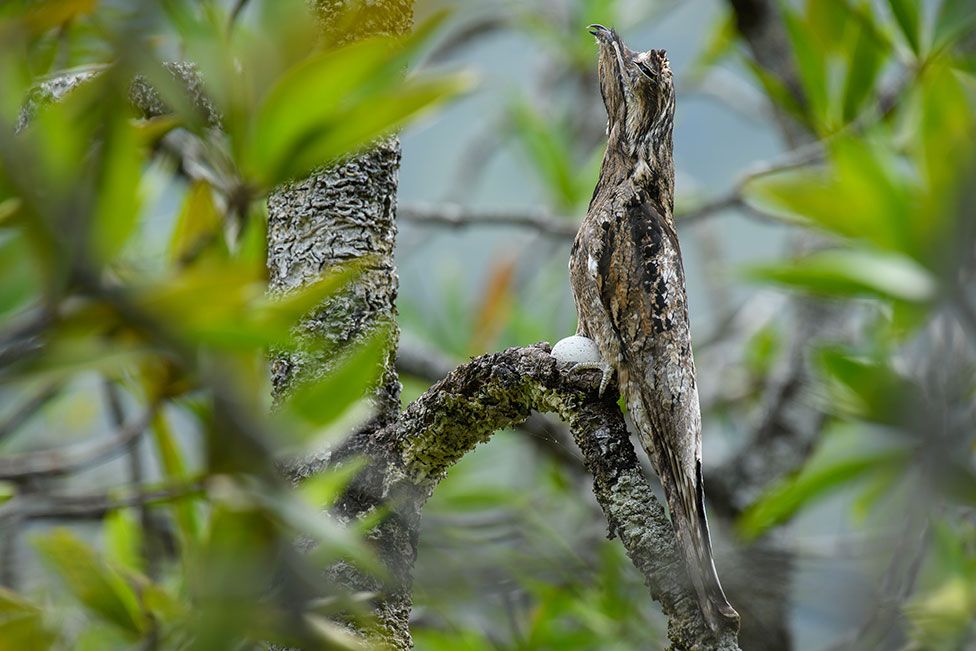
In the mangrove forest of Colombia’s Utría National Park, a common potoo (Nyctibius griseus) is nearly indistinguishable from the surrounding branches while it perches motionless on its nest.
During the day, the potoo perches on tree branches, remaining perfectly still, with its cryptic plumage resembling a broken tree branch or stump.
As I didn’t want to risk disturbing the potoo into flight, I photographed it with a long telephoto lens.
It was only after looking through the lens that I realised there was actually a single egg.

Mangroves & Wildlife runner-up: Mating Nurse Sharks, by Mark Ian Cook, US
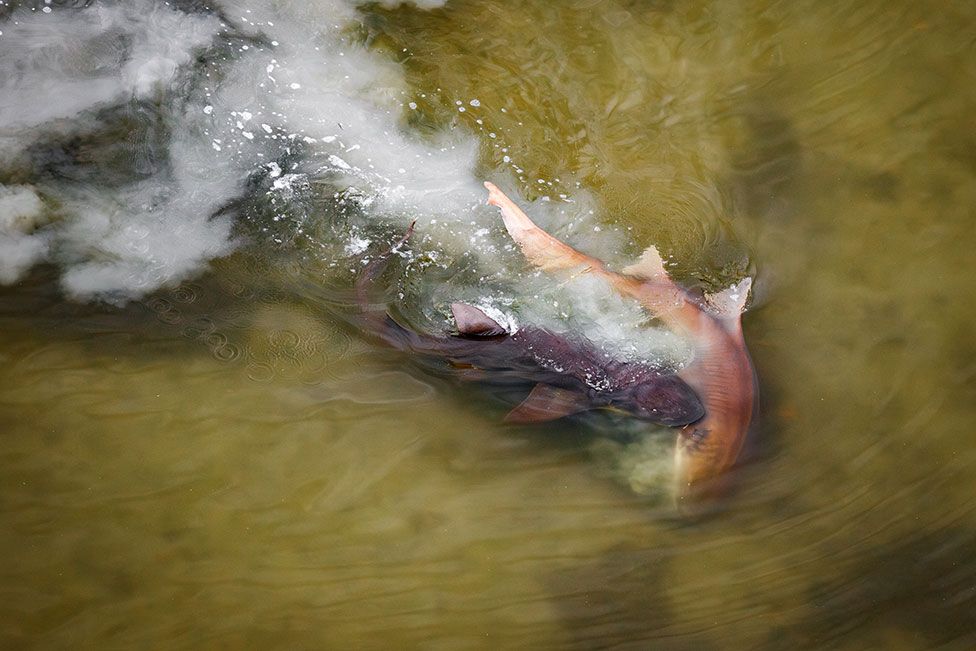
In an image taken from a helicopter, two large nurse sharks display mating behaviour in the shallow waters off the mangrove-lined Shark Point in the Everglades National Park, Florida, US.
Sheltered mangrove habitats that are largely free of human disturbance are critical mating and nursery habitats for a number of shark species – protecting these areas is essential to sustaining shark populations.

Mangroves & Threats winner: The Theatre of Plastic, by Emanuele Biggi, Malaysia
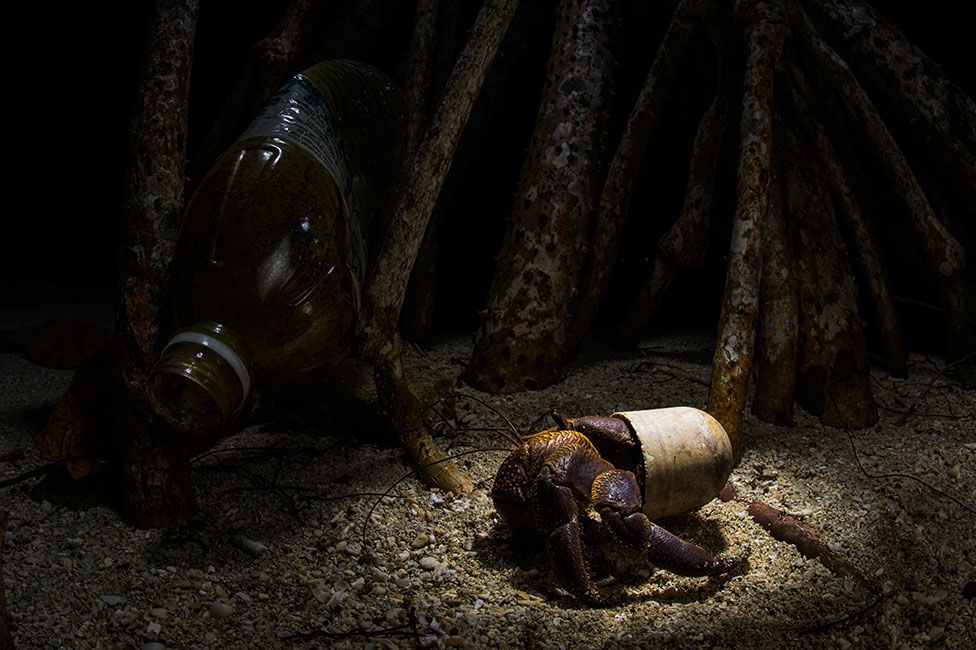
A land hermit crab wanders around at night, close to the beach of Pom Pom Island, Sabah, using a plastic deodorant cap instead of a shell.
Hermit crabs rely on empty shells for shelter and protection. Plastic debris can sometimes resemble shells.
These unnatural “shells” do not provide the necessary protection and can hinder their growth and survival.
Discarded fishing nets, lines, and other plastic debris can entangle and trap marine animals, leading to injury, drowning, or suffocation.

Mangroves & Threats highly commended: Wild & Free, by Yordanis Méndez Segura, Cuba

In the Gulf of Ana María, Cuba, this mangrove-dwelling American saltwater crocodile was spotted with its mouth tangled in nylon rope.

Mangroves & Underwater winner: A Lemon’s Life, by Anita Kainrath, Bahamas
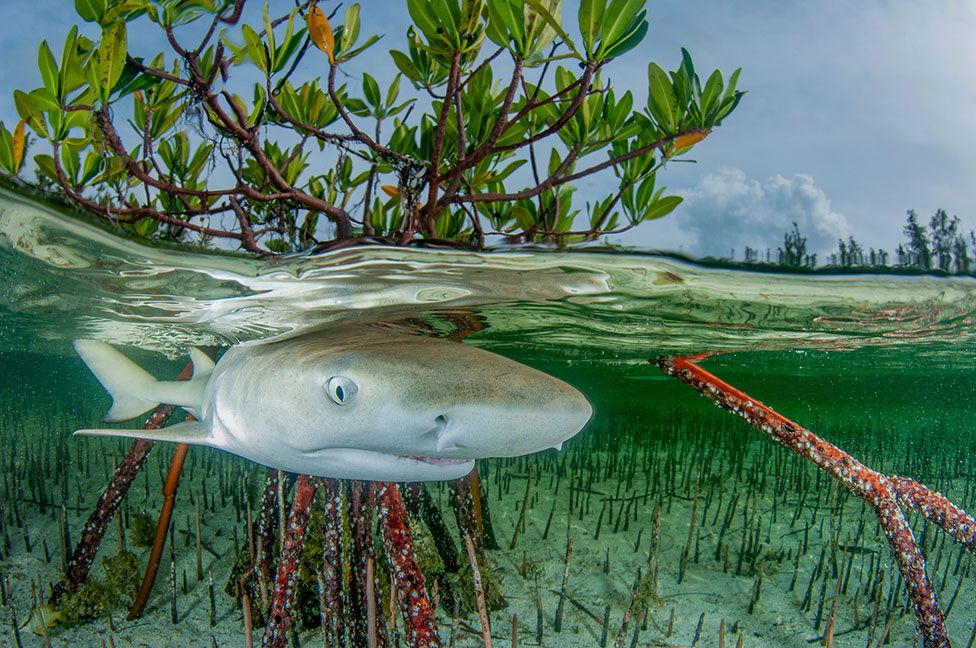
A juvenile lemon shark swims in shallow mangrove forests in the Bahamas.
Lemon sharks spend their first four to six years in shallow waters, where mangrove forests protect them from bigger predators.

Mangroves & Underwater runner-up: Forest Meets Reef, by Brooke Pyke, Indonesia
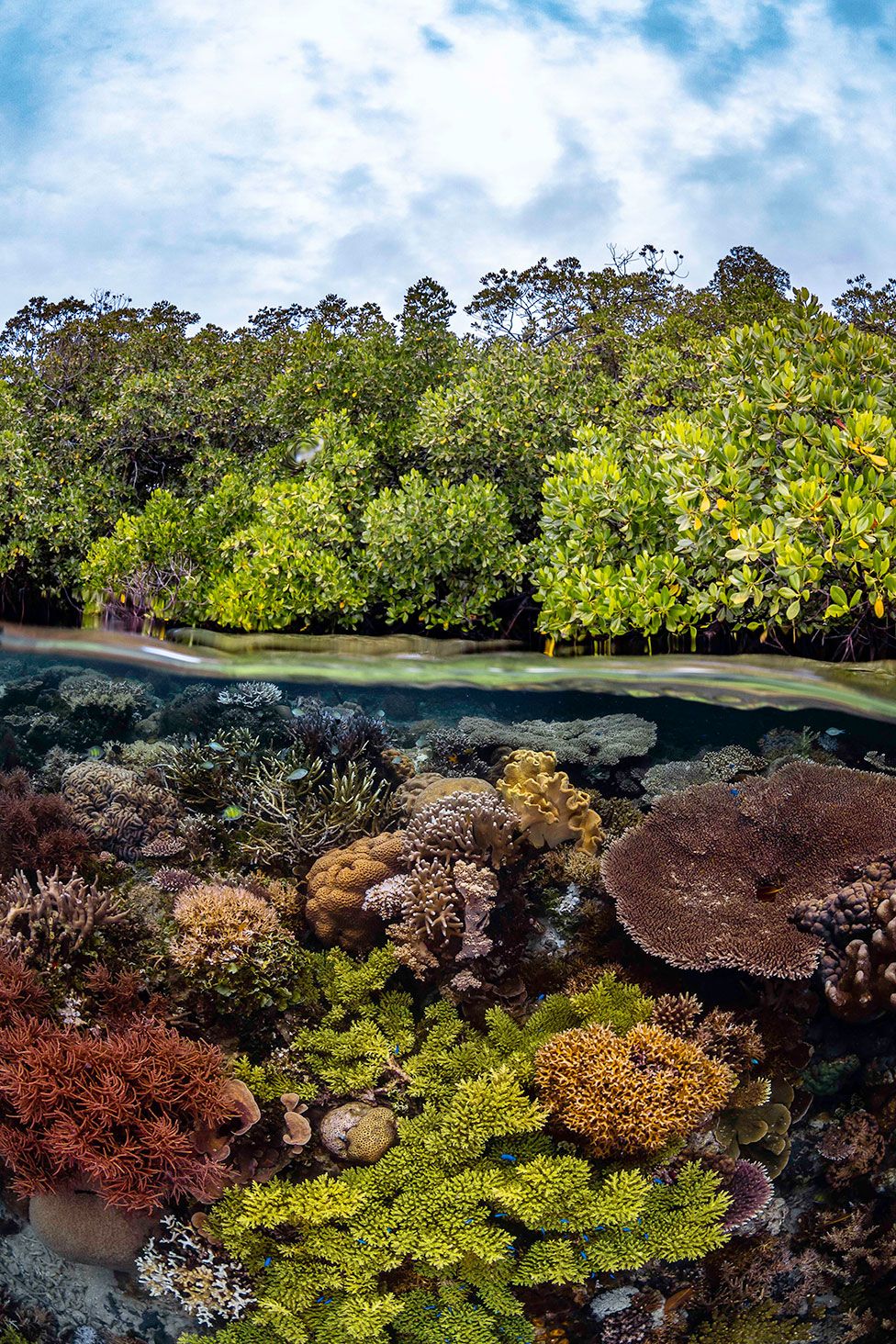
A lush and thriving mangrove forest grows atop a vibrant coral reef on Raja Ampat’s Gam island, Indonesia.
Mangroves provide many benefits to coral reefs, including protection from sedimentation, filtering nutrients from land and rivers, and a nursery habitat for many species of juvenile fish.

Mangroves & People winner: Séphora the Clam Diver, by Kris Pannecoucke, Democratic Republic of the Congo
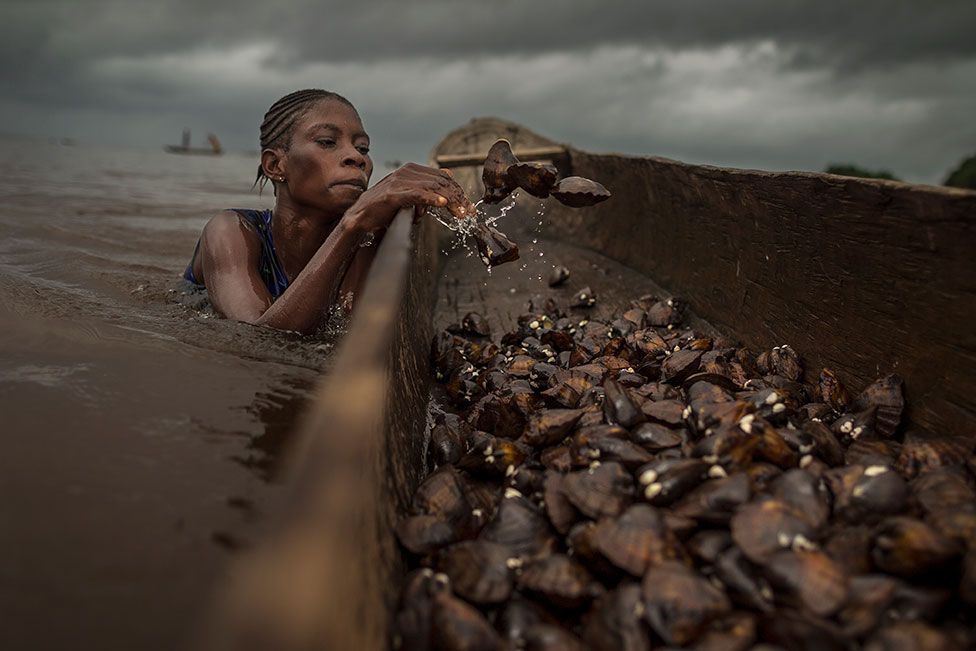
Since the dawn of time, people have been diving in the mangroves in search of clams.
Women like Séphora (above) dive up to four metres for clams in the Mangroves National Park, a fragile nature reserve in Bas-Congo, Democratic Republic of the Congo.
They sell skewers with clam meat in the cities of Muanda and Boma.
Entire islands, like Kimwabi where Séphora lives, are built on empty shells.

Mangroves & People runner-up: In the Forest, by Phan Thi Khanh, Vietnam
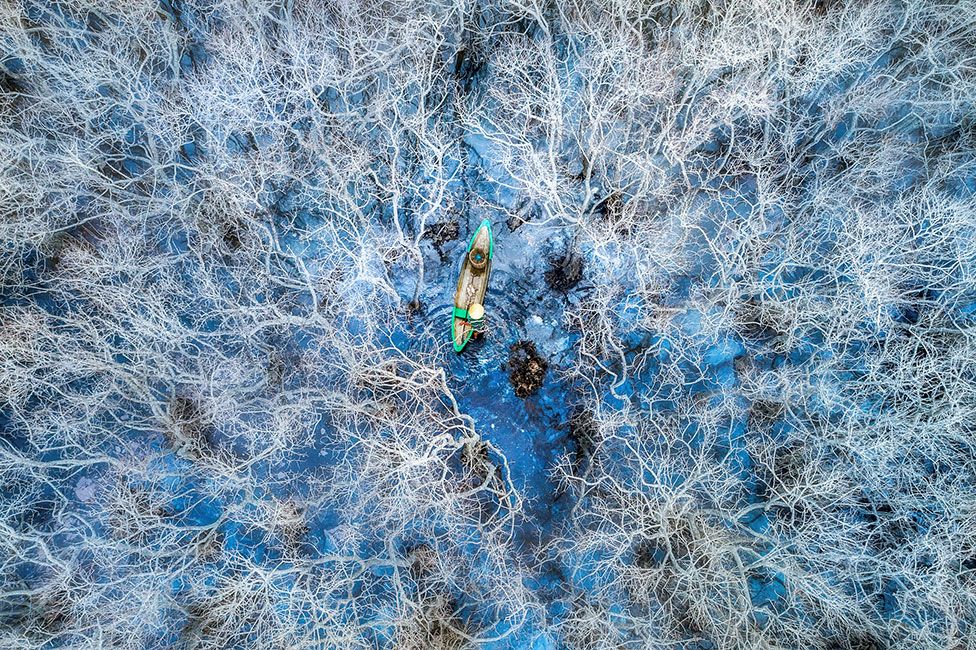
A fisherman navigates the waters in the Ru Cha mangrove forest near Hue, Vietnam.
In winter, the mangroves shed all their leaves, leaving thin white trunks, like a giant spider web.

Mangroves & Conservation Stories winner: The Blue Fig, by Mohammad Rakibul Hasan, Bangladesh
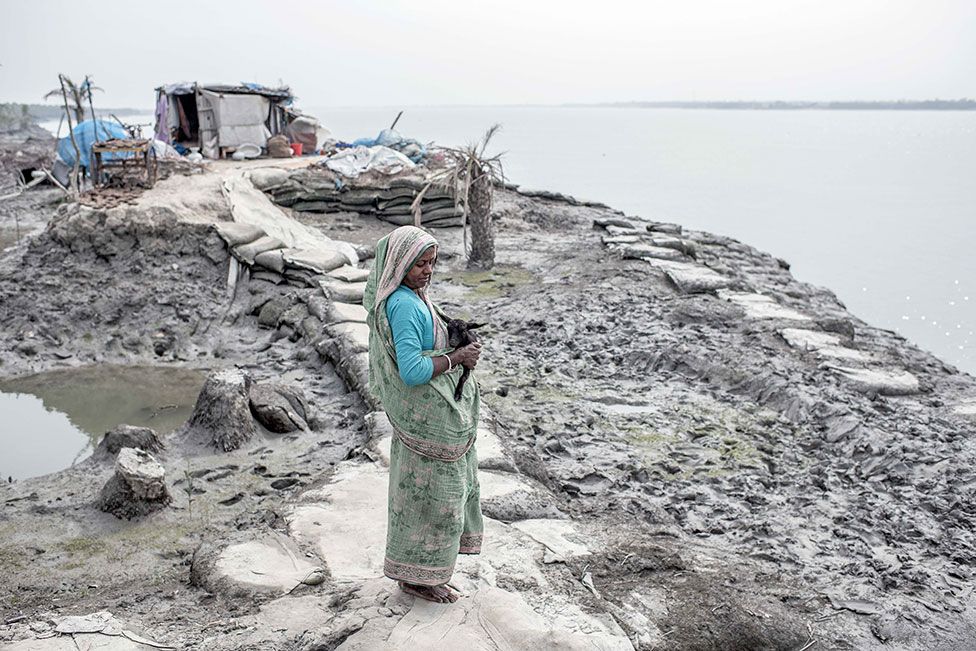
The Sundarbans, which means “beautiful forest”, is one of the most vulnerable areas in Bangladesh to the impacts of climate change.
As the mangrove area is damaged by sea-level rise and extreme weather events, people will be affected by food and water insecurity and the loss of their homes and livelihoods.

Mangroves & Conservation Stories runner-up: Stewards of the Mangroves, by Jason Florio, Gambia
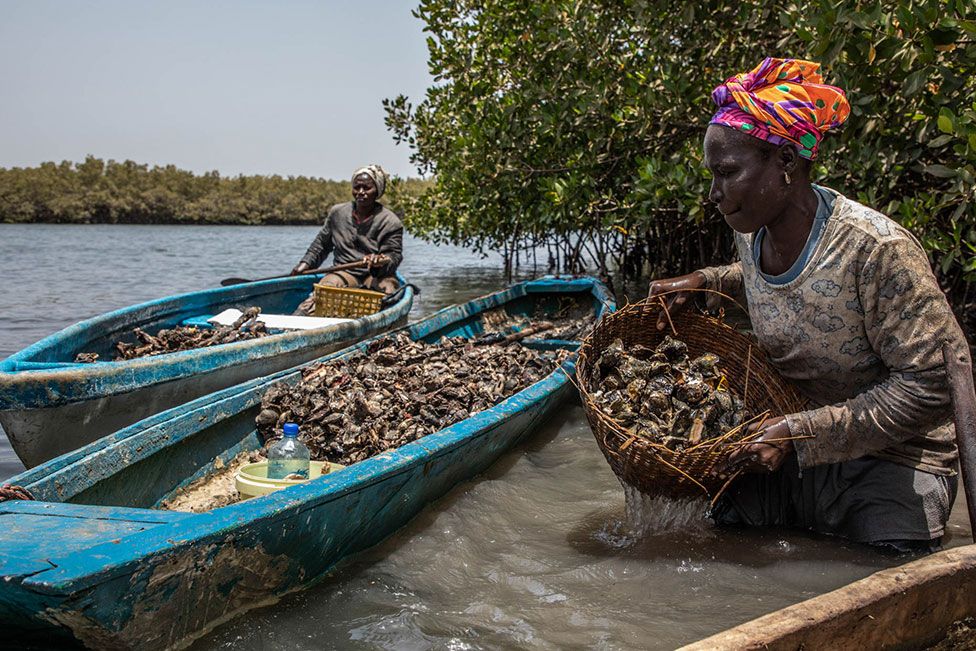
The Gambia River’s mangroves are crucial to its ecosystem, and benefit the local women who collect oysters.
The TRY Oyster Women’s Association encourages women to consider themselves stewards of the mangroves, by educating them to preserve the mangroves and harvest sustainably, as well as engaging in reforestation.

Young Mangrove Photographer of the Year (under the age of 24) winner: Eye Contact, by Katanyou Wuttichaitanakorn, Thailand
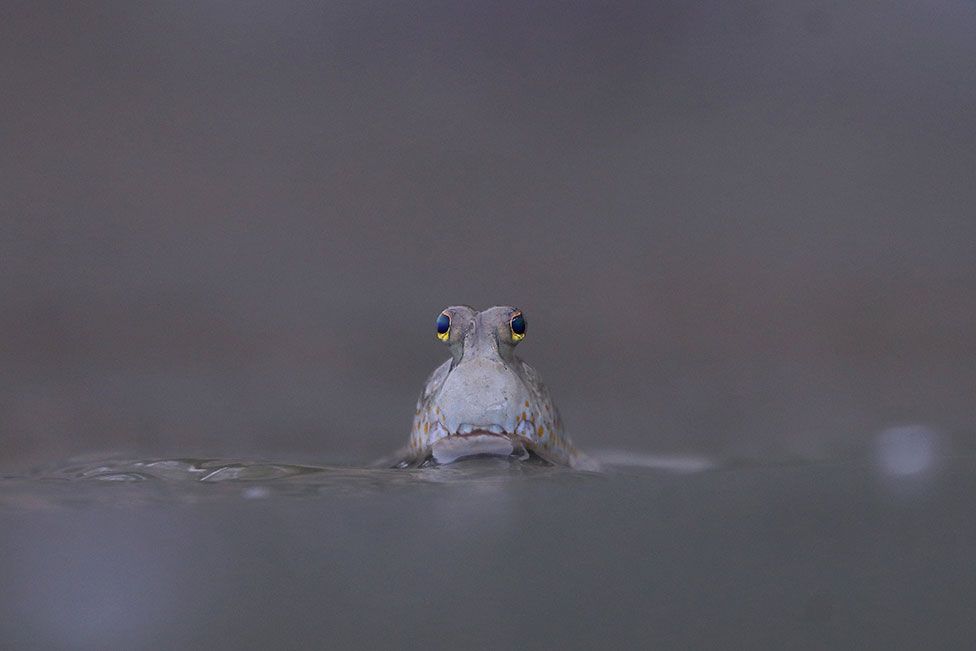
A baby golden-spotted mudskipper snapped on the edge of a mangrove in Samut Sakhon province, Thailand.

All photos subject to copyright.

